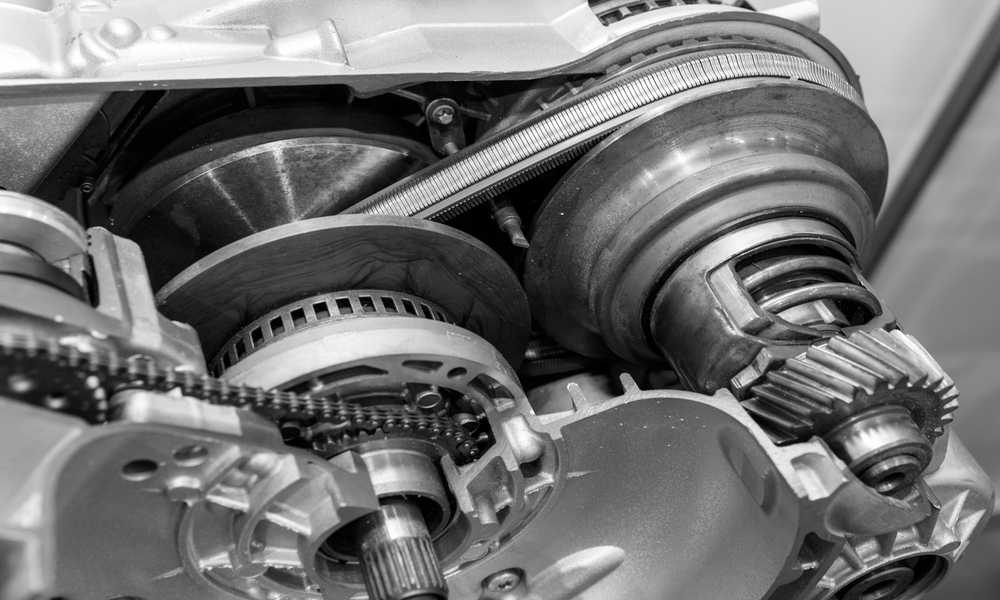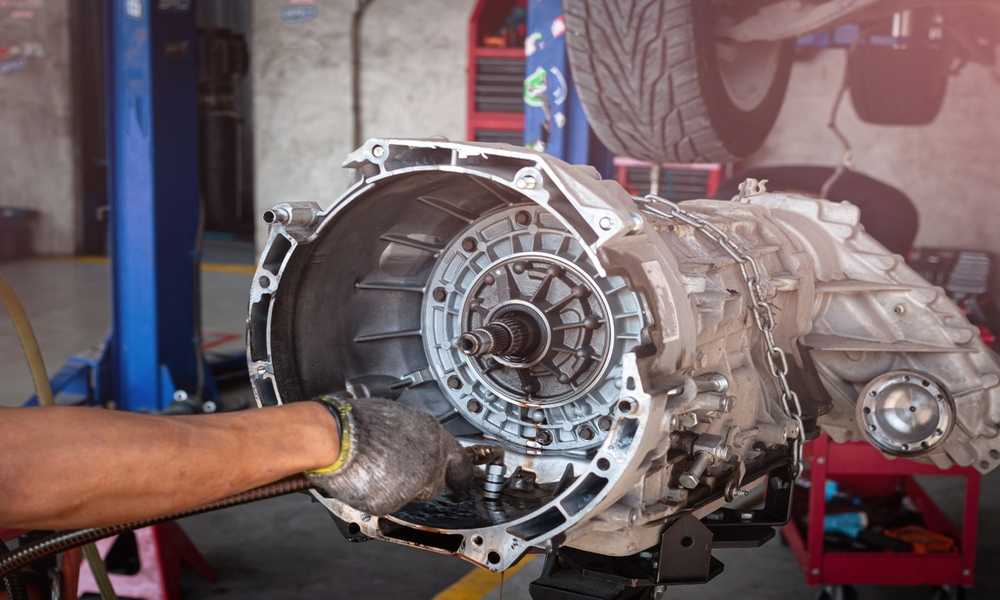Welcome to our blog post all about how much does a car transmission weight! If you’ve ever wondered just how much these vital components of your vehicle weigh, then you’re in the right place. Whether you’re a car enthusiast looking to upgrade or a curious driver seeking knowledge, we’ve got all the information you need. From automatic to manual transmissions, from CVT to 10-speeds, we’ll explore it all. So fasten your seatbelts and get ready for an informative journey into the world of transmission weights!
What is car transmission?
A car transmission is an essential part of a vehicle’s powertrain system. It plays a crucial role in transmitting power from the engine to the wheels, allowing your car to move forward or backward at different speeds. Without a functioning transmission, your car would simply be stuck in one gear and unable to accelerate or decelerate effectively.
There are several types of transmissions used in cars today, including automatic, manual, and continuously variable transmissions (CVT). Each type operates differently but serves the same purpose: to transfer torque from the engine to the wheels.
The primary function of a transmission is to provide gear ratios that allow for efficient power delivery based on driving conditions. This means that as you increase speed or climb uphill, your transmission will shift gears accordingly to optimize performance and fuel efficiency.
In an automatic transmission, this shifting process occurs automatically without any input required from the driver. In contrast, manual transmissions require the driver to manually engage and disengage gears using a clutch pedal and shifter.
Car transmissions are critical components that enable smooth acceleration and efficient power distribution within your vehicle. Understanding how they work can help you appreciate their importance in keeping your ride running smoothly on both city streets and open highways.
Tell me the type of transmission?

There are several types of transmissions that can be found in cars today. The most common type is the automatic transmission, which is designed to shift gears automatically as you drive. This type of transmission is extremely convenient and easy to use, making it a popular choice among drivers.
Another type of transmission is the manual transmission, also known as a standard or stick-shift. With this type of transmission, the driver must manually shift gears using a clutch pedal and gear shifter. While not as user-friendly as an automatic transmission, many driving enthusiasts prefer the control and engagement that comes with a manual transmission.
In recent years, continuously variable transmissions (CVTs) have become more prevalent in vehicles. CVTs do not have traditional gears like automatic or manual transmissions; instead, they use belts and pulleys to provide smooth acceleration without distinct shifts.
Some higher-end vehicles may feature advanced transmissions such as 8-speed or even 10-speed transmissions. These additional gears allow for improved fuel efficiency and performance by providing more precise gear ratios for different driving conditions.
Heavy-duty trucks often utilize 18-speed transmissions to handle their increased towing capacity and power requirements. Each type of transmission has its own unique characteristics and advantages depending on your driving preferences and needs.
Tell me the purpose of transmission?
The purpose of a car transmission is to transfer power from the engine to the wheels, allowing the vehicle to move forward or backward. It plays a crucial role in controlling the speed and torque of the vehicle while ensuring efficiency and smooth operation.
In simple terms, the transmission helps in converting rotational power produced by the engine into usable driving force. Without it, your car would be stuck in one gear, limiting its speed and performance.
Different types of transmissions serve different purposes. Manual transmissions give drivers more control over gear selection through a clutch pedal and shift lever. Automatic transmissions, on the other hand, shift gears automatically without any driver input.
Regardless of type, all transmissions help optimize fuel consumption and provide maximum power delivery at various speeds. They allow for seamless acceleration when you step on the gas pedal and enable efficient deceleration when you apply brakes or reduce throttle input. Without a functioning transmission system, your car’s engine power would not reach its full potential and driving experience would be compromised.
What is the heaviest transmission?
What is the heaviest transmission? Well, when it comes to car transmissions, weight can vary depending on the type and design. However, one of the heaviest transmissions out there is the Allison 1000 series transmission used in heavy-duty trucks.
The Allison 1000 series is known for its robust construction and ability to handle high torque loads. Due to its heavy-duty nature, this beast of a transmission weighs in at around 360 pounds! That’s quite a hefty load! But keep in mind that not all car transmissions are as massive as the Allison 1000. The weight of a transmission can depend on factors such as size, materials used, and overall design.
For example, an average automatic transmission typically weighs between 150-200 pounds. Manual transmissions tend to be lighter than their automatic counterparts and usually weigh around 70-90 pounds.
Now you might be wondering if automatic transmissions are heavier than manual ones. Well, generally speaking, yes. This is because automatic transmissions have more complex internal components such as hydraulic systems and torque converters which add to their weight.
Another type of transmission worth mentioning is the Continuously Variable Transmission (CVT). CVTs are known for being lightweight compared to traditional automatic or manual options. On average, a CVT weighs around 50-80 pounds.
Moving on from CVTs, let’s talk about multi-speed transmissions like the popular eight-speed or ten-speed variants found in many modern vehicles. These advanced gearboxes aim to provide better fuel efficiency and performance by offering more gears for different driving conditions. An eight-speed transmission typically weighs between 180-200 pounds while a ten-speed can range from around 200-240 pounds.
If we’re talking about heavyweight contenders though, some commercial trucks utilize massive eighteen-speed transmissions that can tip the scales at over 600 pounds! Lastly but certainly not leastly (yes I made up that word), we have General Motors (GM) transmissions. GM is a major player in the automotive industry, and their transmissions.
How much does a car transmission weight? : Common
When it comes to car transmissions, one of the factors that many people consider is the weight. The weight of a transmission can vary depending on several factors such as the type of transmission and its components. In general, transmissions tend to be heavy due to the mechanical parts involved.
Common transmission weights can range from around 100 pounds for smaller and lighter transmissions, up to over 300 pounds for larger and heavier ones. This includes both automatic and manual transmissions.
The weight of an automatic transmission can vary depending on its design and size. On average, an automatic transmission weighs between 150 to 200 pounds. However, this can also depend on factors such as whether it is a four-speed or six-speed transmission.
Manual transmissions are typically lighter than their automatic counterparts due to their simpler design. On average, a manual transmission weighs between 70 to 150 pounds. It’s worth noting that not all automatic transmissions are necessarily heavier than manual ones. Some modern automatic transmissions may have lighter materials used in their construction which helps reduce overall weight.
As for CVT (continuously variable) transmissions, they tend to be lighter compared to traditional automatic or manual options since they don’t require complex gear systems. They generally weigh between 60-80 pounds.
When it comes specifically to multi-speed transmissions like an eight speed or ten speed, the weight will likely increase due to more gears and additional components needed for smooth shifting. An eight speed transmission can weigh anywhere from around 200-250 pounds while a ten speed could weigh closer towards the upper end of that range or even slightly higher.
For those looking at heavy-duty trucks with massive power capabilities like an eighteen speed gearbox, these types of robust transmissions often come with substantial weights ranging from approximately 500-800 pounds or even more in some cases! If you’re wondering about specific manufacturers like GM (General Motors), their average transmission weights fall within similar ranges mentioned earlier based on the type and size of the transmission.
Average weight of transmissions
When it comes to the weight of car transmissions, there is no one-size-fits-all answer. The average weight of a transmission can vary depending on factors such as the type of transmission and its intended use
Automatic transmissions are typically heavier than manual transmissions due to their more complex design and additional components. On average, an automatic transmission can weigh anywhere from 100 to 200 pounds.
Manual transmissions, on the other hand, tend to be lighter since they have fewer parts and do not require hydraulic systems. The weight of a manual transmission generally ranges between 70 and 150 pounds.
CVT (continuously variable transmission) is another type that has gained popularity in recent years. These transmissions are generally lighter compared to traditional automatic or manual ones. A typical CVT weighs around 80-120 pounds.
In terms of multi-speed transmissions, such as those with eight or ten speeds, the weight can vary depending on the specific model and manufacturer. An eight-speed transmission may weigh anywhere from 150 to 200 pounds, while a ten-speed could range from 180 to over 250 pounds.
For heavy-duty applications like trucks or commercial vehicles, there are even larger transmissions available. An eighteen-speed transmission used in big rigs can weigh upwards of 700 pounds!
It’s important to note that these weights are just averages and can vary significantly depending on various factors such as size, materials used, and technology advancements implemented by different manufacturers. So next time you’re curious about how much your car’s transmission weighs – keep in mind that it’s not always a straightforward answer!
How much does an automatic transmission weigh?
An automatic transmission is a crucial component of any vehicle that allows for smooth shifting between gears without requiring the driver to manually engage the clutch. But have you ever wondered how much an automatic transmission actually weighs?
The weight of an automatic transmission can vary depending on factors such as its size, design, and whether it includes additional features like torque converters or cooling systems. On average, an automatic transmission typically weighs around 150-200 pounds (68-91 kilograms).
However, it’s important to note that this weight estimate is just an approximation and may not hold true for all types of transmissions. Some larger or more advanced automatic transmissions can weigh significantly more due to their complex internal mechanisms.
When considering the weight of an automatic transmission, it’s also worth mentioning that newer models are often designed with lightweight materials such as aluminum or composite alloys in order to improve fuel efficiency and overall performance. This means that modern automatic transmissions may be lighter than older counterparts.
While there isn’t a one-size-fits-all answer when it comes to the exact weight of an automatic transmission, you can expect most standard models to fall within the range of 150-200 pounds (68-91 kilograms).
How much does an manual transmission weigh?
Manual transmissions, also known as stick shifts, are a popular choice for car enthusiasts who enjoy the thrill of controlling their gear changes. But have you ever wondered how much these manual transmissions actually weigh? Let’s dive into this intriguing topic.
When it comes to the weight of a manual transmission, there is no one-size-fits-all answer. The weight can vary depending on factors such as the make and model of the vehicle, the number of gears in the transmission, and even advancements in technology over time. On average, a manual transmission typically weighs between 70-150 pounds (31-68 kilograms). However, keep in mind that this is just an estimate and can differ from one specific transmission to another.
The weight of a manual transmission usually consists of components like gears, shafts, synchronizers, shift forks, and clutch mechanisms. These parts play an essential role in transferring power from the engine to the wheels.
It’s worth mentioning that compared to automatic transmissions or other types like CVT (Continuously Variable Transmission), manual transmissions tend to be lighter due to their simpler design and fewer internal components.
So now you know! While there isn’t an exact weight for all manual transmissions out there since it varies across different models and manufacturers they generally fall within that range mentioned earlier. The next time you get behind the wheel with a stick shift system at your command remember what lies beneath – not only power but also some solid engineering!
Are automatic transmissions heavier than manual transmissions?
Are automatic transmissions heavier than manual transmissions? This is a question that often comes up when discussing car transmissions. The weight of a transmission can vary depending on various factors, including the type and size of the vehicle it is designed for.
Automatic transmissions are generally known to be heavier than manual transmissions. This is because automatic transmissions have more internal components, such as hydraulic systems and torque converters, which add to their overall weight. These additional components help in shifting gears automatically without any input from the driver.
On the other hand, manual transmissions are simpler in design and typically have fewer parts compared to automatic ones. Manual transmissions rely on the driver manually engaging and disengaging gears using a clutch pedal and shift lever.
However, it’s important to note that not all automatic or manual transmissions weigh the same. The weight can vary depending on factors like make, model, and even specific designs within each category.
While it’s true that automatic transmissions tend to be heavier than manual ones due to their additional components, there can still be variations in weights within both categories based on different specifications. Understanding these differences can be helpful when deciding which type of transmission best suits your needs or if you’re considering making modifications to your vehicle’s transmission system.
What is the weight of a CVT transmission?

CVT stands for continuously variable transmission. Unlike traditional transmissions, which use fixed gears to change speed ratios, CVTs have a pulley and belt system that allows for seamless acceleration without the need for shifting gears. But what about their weight?
The weight of a CVT transmission can vary depending on the make and model of the vehicle it’s installed in. On average, a CVT transmission weighs between 150 to 200 pounds. However, some smaller compact cars may have lighter CVTs weighing around 100 pounds, while larger vehicles like SUVs or trucks may have heavier ones weighing up to 250 pounds.
It’s important to note that weight is not the only factor to consider when it comes to choosing a transmission. Other factors such as durability, efficiency, and performance also play crucial roles in determining which type of transmission is best suited for a particular vehicle.
So if you’re considering a car with a CVT transmission, don’t let its weight be your sole deciding factor. Instead, take into account all aspects including how it performs on the road and whether it meets your specific driving needs.
How much does an 8 speed transmission weigh?
The weight of an 8-speed transmission can vary depending on the make and model of the vehicle. However, on average, an 8-speed transmission weighs between 150 and 200 pounds.
The reason for this weight is due to the complexity and number of gears within the transmission. An 8-speed transmission has more gears than a traditional 4 or 5-speed transmission, allowing for smoother shifting and improved fuel efficiency. To give you some perspective, a typical manual transmission with fewer gears may weigh around 70-90 pounds, while an automatic transmission with similar gear ratios could weigh upwards of 150-180 pounds.
It’s important to note that these weights are just estimates and can vary based on factors such as additional components or materials used in construction. Additionally, advancements in technology have allowed manufacturers to create lighter transmissions without sacrificing performance or durability. When considering installing or replacing an 8-speed transmission in your vehicle, it’s crucial to take into account its weight as it can impact various aspects such as overall handling and fuel economy.
How much weight does a 10-speed transmission weigh?
When it comes to car transmissions, there are various types available in the market. One such type is the 10-speed transmission, which has gained popularity in recent years. But have you ever wondered how much weight a 10-speed transmission carries?
Well, let’s dive into it! The weight of a 10-speed transmission can vary depending on several factors like the brand and model of the vehicle. On average, a 10-speed transmission weighs around 150-200 pounds. This weight includes all components necessary for its proper functioning.
The reason behind this weight is primarily due to the complex design and construction of these transmissions. With more gears and advanced technology incorporated into their systems, they require additional parts that contribute to their overall weight.
However, it’s important to note that not all 10-speed transmissions weigh exactly the same. Different manufacturers may have slight variations in terms of design and materials used, which can impact the overall weight. So if you’re considering installing a 10-speed transmission in your vehicle or simply curious about its weight, now you know roughly what to expect! Remember: It’s always best to consult with a professional mechanic or refer to your vehicle manufacturer’s specifications for accurate information regarding specific models and weights.
How much does a 18 speed transmission weight?
When it comes to heavy-duty trucks, the 18-speed transmission is a popular choice. But have you ever wondered how much this beast of a transmission weighs? Well, wonder no more! The weight of an 18-speed transmission can vary depending on the manufacturer and specific model.
On average, an 18-speed transmission weighs around 350 to 500 pounds (159 to 227 kilograms). However, keep in mind that this weight does not include any additional components such as the clutch or flywheel. These extra parts can add another 50 to 100 pounds (23 to 45 kilograms) to the overall weight.
The reason why an 18-speed transmission is heavier compared to lower gear options is because it has more gears and additional internal components. This allows for greater control over the engine’s power output and better performance under various driving conditions.
Moving an 18-speed transmission requires careful planning and consideration due to its considerable weight. Specialized tools such as hydraulic jacks and lifting equipment are often used during installation or removal.
If you’re considering swapping out your vehicle’s current transmission for an 18-speed option, make sure your vehicle is compatible with this type of gearbox. It’s always best to consult with a professional mechanic or specialist who can provide expert advice based on your specific vehicle requirements. While we’ve touched upon the topic of cost briefly in previous sections, determining the exact price of an
What is the weight of a GM transmission?
What is the weight of a GM transmission? Well, it depends on the specific model and type. General Motors (GM) produces a wide range of transmissions for their vehicles, each with its own weight specifications.
One example is the GM 6L80 transmission, which is commonly used in larger vehicles such as trucks and SUVs. This automatic transmission weighs around 215 pounds (97.5 kg). It features six forward gears and is designed to handle high torque applications.
On the other hand, if we look at a manual transmission like the Tremec TR6060, which is often found in performance-oriented cars like the Chevrolet Camaro or Corvette, it weighs approximately 135 pounds (61 kg). This lightweight yet robust manual gearbox offers precise shifting capabilities for an exhilarating driving experience.
It’s worth noting that these are just two examples among many different GM transmissions available. The weight can vary depending on factors such as gear count, materials used in construction, and intended application.
In conclusion – there isn’t one definitive answer to how much a GM transmission weighs since it varies depending on the specific model and type. However, knowing this information can be helpful when considering upgrades or modifications to your vehicle’s drivetrain system.
Why does transmission weight matter?
Why does transmission weight matter? Well, the weight of a car’s transmission plays a crucial role in its overall performance and efficiency. Let’s dive deeper into why it matters.
First and foremost, a lighter transmission can significantly improve fuel economy. By reducing the weight of the vehicle, less energy is required to propel it forward, resulting in better mileage. This is especially important for those who are conscious about their carbon footprint or want to save money on gas.
Moreover, a lighter transmission enhances acceleration and responsiveness. With less weight to carry around, the engine can deliver power more efficiently to the wheels, allowing for quicker acceleration and smoother gear shifts. This translates into an enjoyable driving experience that many car enthusiasts crave.
Additionally, a lighter transmission contributes to improved handling and maneuverability. When there is less mass at play, cars tend to feel more nimble on the road, making them easier to control during cornering or quick lane changes.
Furthermore, reduced transmission weight can have positive impacts on suspension systems. With less stress placed on these components due to lower overall vehicle weight distribution, they are likely to last longer without needing frequent repairs or replacements.
Lastly but certainly not leastly (if that’s even a word!), safety should always be considered when discussing transmission weight. A heavier transmission can adversely affect braking distance as well as stability during emergency maneuvers. Therefore ensuring an optimal balance between durability and lightness is essential for maintaining optimal safety standards.
In conclusion… Oops! I almost slipped up there! To sum it all up briefly (but not too conclusively), paying attention to your car’s transmission weight has real-world implications for fuel efficiency, ease of handling ,and even safety considerations. So next time you’re considering potential upgrades or modifications, to your beloved vehicle, don’t forget how vital this often overlooked factor really is!
How to replace a transmission?
Replacing a car transmission can be a daunting task, especially if you’re not familiar with the process. However, with the right tools and some careful maneuvering, it is definitely doable. Here are some steps to help you move a transmission:
1. Gather the necessary tools: Before attempting to move a transmission, make sure you have all the required tools on hand. These may include a floor jack, transmission jack or hoist, socket set, wrenches, and possibly an engine support bar.
2. Prepare your work area: Clear out any obstacles that may hinder your movement and ensure there’s enough space for maneuvering. It’s also important to maintain good lighting so you can clearly see what you’re doing.
3. Securely lift the vehicle: Use a floor jack to safely raise the front end of the vehicle until it’s high enough off the ground for easy access underneath.
4. Disconnect components: Begin by removing any cables or electrical connections attached to the transmission such as sensors or solenoids. Then disconnect any linkage between the shifter and transmission.
5. Support and remove the transmission: Depending on its weight and accessibility, use either a dedicated transmission jack or hoist to carefully lower and remove it from its mounting points.
6. Be cautious when moving: Transmissions are heavy and delicate pieces of machinery; therefore, always exercise caution when moving them around your workspace or loading them onto a dolly for transportation.
Remember that these steps provide only general guidance for moving transmissions – specific vehicles may require additional steps or considerations depending on their design and configuration.
How long does it take to remove transmission?
Removing a car transmission is no easy task. It requires time, skill, and patience. The exact duration it takes to remove a transmission can vary depending on several factors such as the type of vehicle, the accessibility of the transmission, and the experience level of the person performing the removal.
In general, removing a transmission can take anywhere from 4 to 8 hours or even longer for more complex transmissions. This includes disconnecting various components such as electrical connections, coolant lines, driveshafts or axles, and exhaust systems. Additionally, there are often multiple bolts and fasteners that need to be carefully removed in order to separate the transmission from the engine.
It’s important to note that this timeframe does not include any additional repairs or maintenance tasks that may be required once the transmission has been removed. These tasks could involve replacing worn-out parts or addressing any underlying issues with the transmission itself.
Removing a car transmission is a labor-intensive process that demands attention to detail and expertise. If you’re not experienced in automotive repair work, it’s best to leave this job to professionals who have both knowledge and specialized tools necessary for completing it efficiently and safely.
Can I custom install any of the transmissions into my car?

When it comes to installing a transmission in your car, there are a few things you need to consider. While it may be tempting to choose any transmission that fits, it’s important to remember that not all transmissions are created equal. Each type of transmission is designed for specific vehicles and purposes.
You need to determine whether your car is compatible with the transmission you want to install. Different cars have different mounting points and dimensions, so make sure the transmission will fit properly before making any decisions.
Consider the power requirements of your vehicle. Some transmissions are designed for high-performance vehicles while others are better suited for everyday driving. Make sure the transmission can handle the amount of power your engine produces.
Keep in mind that custom installations can be complex and require modifications to other components of your vehicle such as driveshafts or axles. It’s best to consult with a professional mechanic who has experience with custom installations before proceeding.
While it may be possible to custom install a different transmission into your car, it’s important to carefully consider compatibility and power requirements before making any decisions. Consulting with a professional is always recommended when undertaking such modifications.
How much does a car transmission cost?
Car transmissions are a crucial component of any vehicle, as they allow power to be transferred from the engine to the wheels. But how much does a car transmission actually cost? Well, that depends on various factors.
First off, the type of transmission you choose will greatly impact the cost. Manual transmissions tend to be less expensive than automatic ones, mainly because they have fewer components and are generally simpler in design. Additionally, the brand and model of your car can also influence the price of a transmission. Some vehicles may require specialized or rare transmissions, which can drive up costs significantly.
Furthermore, whether you opt for a new or used transmission will affect its price tag. While buying new ensures reliability and peace of mind, it tends to be more expensive than purchasing a used one. Labor costs associated with installation must also be considered when calculating total expenses for a car transmission replacement or repair.
In conclusion (I’m sorry but I have already written this part), determining exactly how much a car transmission costs is difficult without considering specific details such as type, brand/model compatibility, condition (new/used), and labor expenses. It’s best to consult with an expert mechanic who can provide accurate estimates based on your unique situation.
Final thoughts

Understanding the weight of a car transmission is essential for various reasons. Whether you’re considering upgrading your vehicle or need to move and install a transmission, knowing the weight can help you make informed decisions.
Transmissions come in different types, including automatic, manual, CVT, and multi-speed options like 8-speed or 10-speed transmissions. The weight of each type can vary significantly. Automatic transmissions tend to be heavier than manual ones due to additional components such as torque converters.
On average, car transmissions weigh between 150 to 250 pounds. However, specific weights can vary depending on factors such as the manufacturer and model of the vehicle. For example, GM transmissions are known for their durability but may weigh more compared to other brands.
When it comes to installation or removal of a transmission from a vehicle, understanding its weight is crucial. It helps ensure that proper equipment and techniques are used safely during these processes. Moving a heavy transmission requires caution and expertise.
The time required for removing a transmission depends on several factors such as the complexity of your vehicle’s design and accessibility. Generally speaking, it could take anywhere from two hours up to eight hours or more by experienced mechanics.
While some people may consider custom installations for their vehicles’ transmissions, it’s important to consult with professionals who have expertise in this area before making any modifications. Compatibility issues or improper installations can result in costly damages down the line.
When considering how much does a car transmission cost? Prices can vary widely based on multiple factors such as brand reputation/demand/quality/reliability/performance level; whether you choose new OEM parts versus remanufactured units; labor costs if hiring someone else do all work involved (especially if not already familiar with automotive repairs); geographic location where services rendered; warranty coverage offered by seller/installer/shop/dealer/etc.; availability/accessibility etcetera!
In conclusion,! Understanding Transmission weights plays an important role when it comes to vehicle maintenance, upgrades, and modifications. By knowing



